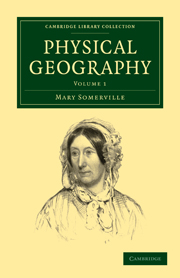Summary
The oriental plateau, or table-land of Tibet, is an irregular four-sided mass stretching from S.W. to N.E., enclosed and traversed by the highest mountains in the world. It is separated from the tableland of Persia by the Hindoo Coosh, a branch of the Himalaya, which occupies the terrestrial isthmus between the low lands of Hindostan and Bucharia.
The cold dreary plateau of Tibet is separated on the south from the glowing luxuriant plains of Hindostan by the Himalaya, which extends 2800 miles from the western extremity of the Hindoo Coosh in Cabulistan to the Gulf of Tonkin in China. The chain of the Altaï,to the north, 4500 miles long, divides the table-land from the deserts of Asiatic Siberia, and, stretching to the sea at Okhotzk under various names, it bends to the N.N.E., and terminates at Behring's Straits, the utmost extremity of Asia. The table-land terminates in the east, partly in the long Chinese chain of the Khing-Khan and Inshan Mountains, which stretch from the Altaï range to the great bend in the Yellow River in China, and farther south by the nameless and almost unknown magnificent mountains in the western provinces of the Chinese empire. On the west the table-land has its limits in the Beloot Tagh, or Cloudy Mountains, the Tartash Tagh of the natives, a transverse range, which leaves the Hindoo Coosh nearly at a right angle about the 72nd degree of E.
- Type
- Chapter
- Information
- Physical Geography , pp. 63 - 82Publisher: Cambridge University PressPrint publication year: 2009First published in: 1848



